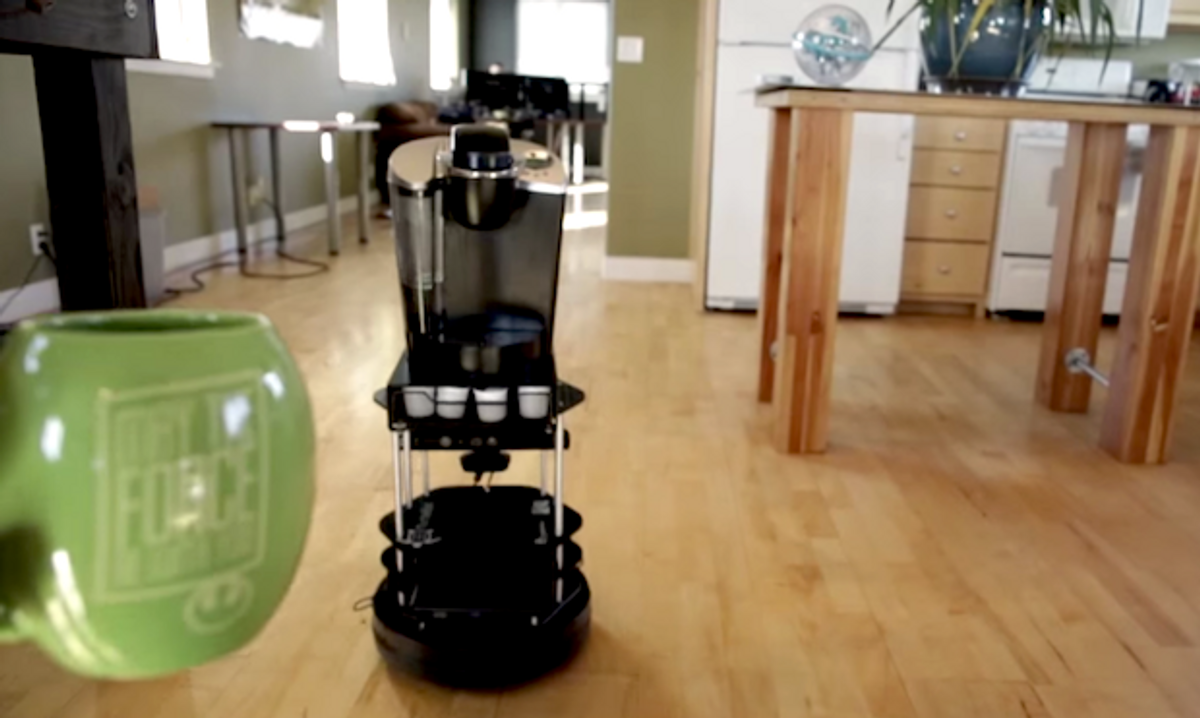As some of you might remember, we got one of the very first TurtleBot 2s from Clearpath Robotics. It was awesome. We were going to put together a big long series of tutorials and stuff, and we got started by explaining how to install Ubuntu and ROS, even if you know as little about either of those things as we did.
But, as awesome as it was to get a very early TurtleBot 2, we ran into a few bugs that made things like networking and navigating abnormally difficult, and to be completely honest with you, we got stuck. Since then, the TurtleBot software has matured significantly, and from the sound of things, getting your little robot to actually, you know, do stuff is way easier than it used to be.
Mark Silliman, Austin Meyers, and Melissa Eaton have posted an excellent set of beginner TurtleBot tutorials, starting from scratch and ending with (hopefully) your TurtleBot bringing you coffee that you can order with an app on your phone.
After mounting a Keurig coffee maker and K-cup holder on top of TurtleBot, we allowed any person in our office to request coffee via web app or a Google Chrome extension on their computer. When a user asked for coffee, TurtleBot autonomously traveled to the requested desk and waited. The co-worker then plugged in the Keurig and made their coffee. When our co-worker was finished they pressed a button on the back of TurtleBot and it went to the next desk or, if no one was waiting, it went back to its charging station to await the next needed caffeine fix.
From the perspective of someone interested in robotics and ROS but without any experience, trying to get a robot to do something like this isn’t just intimidating, it’s quite possibly utterly impossible. You could start by trying to slog through a bunch of documentation on ROS, but much of that assumes that you’ve got some fundamental knowledge about how robots work in both software and hardware in the first place.

The great thing about these new tutorials (and this was also the goal with our original TurtleBot tutorials) is that you really can just start from nothing. There are nearly 30 sections, starting with software and hardware setup, which include detailed plain language instructions, pictures, and even YouTube videos showing you what commands to enter and what information to look for.
Having step-by-step instructions to go from unboxing to coffee delivery is fantastic, but what’s just as important is that you can use these tutorials as a foundation to dream up (and code up) your own ideas. Because that’s what robots are all about, right? First coffee delivery, then the world!
If you want to give this a try, you’ll need a TurtleBot (you can likely build one for under US $1,000, or buy one from one of these distributors), some determination, and a few free weekends. Check out the entire tutorial series (and we’re hoping for more!) at the link below.
[ Learn TurtleBot and ROS ] via [ ROS.org ]
Thanks Mark!
Evan Ackerman is a senior editor at IEEE Spectrum. Since 2007, he has written over 6,000 articles on robotics and technology. He has a degree in Martian geology and is excellent at playing bagpipes.



